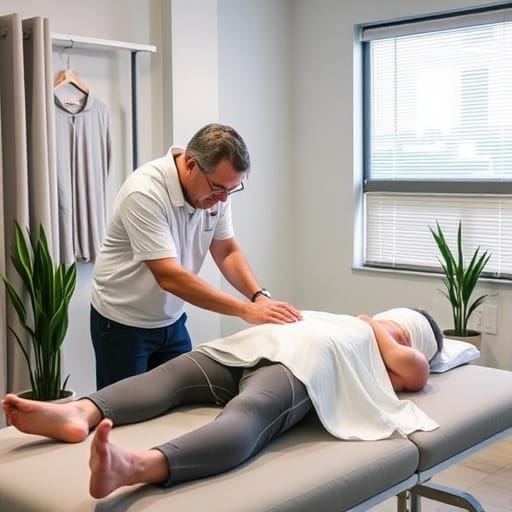Physiotherapy Langley

Introduction
- Overview of Physiotherapy: Define physiotherapy and its importance in health and wellness. Explain how it helps restore movement and function when someone is affected by injury, illness, or disability.
- Physiotherapy in Langley: Introduce Langley as a growing hub for quality healthcare, including physiotherapy. Discuss why physiotherapy is essential for the Langley community and highlight some well-known clinics.
Chapter 1: Understanding Physiotherapy
- History and Evolution of Physiotherapy: Discuss how physiotherapy has evolved over time, from early manual techniques to modern technology-assisted treatments.
- Principles of Physiotherapy: Explain the core principles that guide physiotherapy, such as movement rehabilitation, pain management, and functional restoration.
- Types of Physiotherapy: Break down the various sub-specialties of physiotherapy, including musculoskeletal, neurological, sports, pediatric, and geriatric physiotherapy.
Chapter 2: The Role of Physiotherapists
- Training and Certification of Physiotherapists: Explain the education, training, and certification required to become a licensed physiotherapist in Canada, particularly in British Columbia.
- Specializations within Physiotherapy: Discuss various areas of expertise, including orthopedic physiotherapy, cardiovascular physiotherapy, and vestibular rehabilitation.
- The Physiotherapist-Patient Relationship: Explore the importance of trust, communication, and patient engagement in the treatment process.
Chapter 3: Physiotherapy Techniques and Modalities
- Manual Therapy: Explain techniques such as joint mobilization, manipulation, and soft tissue massage.
- Exercise Therapy: Discuss the importance of tailored exercises for rehabilitation, strength training, and improving mobility.
- Electrotherapy: Introduce modalities like ultrasound, TENS (Transcutaneous Electrical Nerve Stimulation), and electrical muscle stimulation.
- Hydrotherapy and Aquatic Therapy: Discuss water-based therapy and its benefits for patients with conditions like arthritis, injury, or mobility challenges.
- Heat and Cold Therapy: Explain how thermotherapy and cryotherapy are used in physiotherapy to reduce pain and inflammation.
Chapter 4: Conditions Treated by Physiotherapy
- Musculoskeletal Disorders: Back pain, neck pain, and joint issues like osteoarthritis and rheumatoid arthritis.
- Sports Injuries: Common sports injuries such as ACL tears, tennis elbow, and rotator cuff injuries, and how they are treated.
- Neurological Conditions: Physiotherapy for stroke recovery, multiple sclerosis, and Parkinson’s disease.
- Cardiovascular Rehabilitation: The role of physiotherapy in recovering from heart surgery or managing chronic heart disease.
- Pediatric Physiotherapy: Addressing conditions like developmental delays, cerebral palsy, and scoliosis in children.
- Geriatric Physiotherapy: Treating age-related conditions such as osteoporosis, balance disorders, and arthritis in the elderly.
Chapter 5: Langley's Physiotherapy Clinics
- Notable Physiotherapy Clinics in Langley: Provide an overview of some of the top physiotherapy clinics in Langley (like Pitt Meadows Physiotherapy & Sports Clinic) and the services they offer.
- Choosing the Right Physiotherapy Clinic: Tips on selecting the best clinic based on location, services, reputation, and patient reviews.
- Technology and Innovation in Langley Physiotherapy: Discuss how advanced technology is integrated into Langley's clinics, from motion analysis software to state-of-the-art rehabilitation equipment.
Chapter 6: The Importance of Physiotherapy for Specific Populations
- Athletes: How physiotherapy helps in injury prevention, recovery, and performance improvement.
- Office Workers: Addressing posture issues, repetitive strain injuries (RSI), and the impact of sedentary lifestyles.
- Pregnant Women: Discuss physiotherapy for managing back pain, pelvic floor dysfunction, and postnatal recovery.
- Seniors: Explain the importance of physiotherapy in maintaining mobility and independence in older adults.
Chapter 7: The Role of Physiotherapy in Pain Management
- Chronic Pain: How physiotherapy plays a crucial role in managing conditions like fibromyalgia, migraines, and chronic lower back pain.
- Post-Surgical Rehabilitation: The importance of physiotherapy after surgeries such as knee replacement, hip replacement, and spinal surgery.
- Injury Prevention and Recovery: How physiotherapy helps prevent injuries and manage recovery timelines.
Chapter 8: Patient Testimonials and Success Stories
- Real-Life Case Studies from Langley: Feature success stories from patients who have undergone physiotherapy in Langley, detailing their conditions, treatment plans, and recovery outcomes.
- Physiotherapy’s Impact on Quality of Life: How effective treatment improves the overall well-being of patients.
Chapter 9: Physiotherapy and Mental Health
- Link Between Physical and Mental Health: Explore how physical rehabilitation positively affects mental health by reducing pain, improving mobility, and boosting confidence.
- Coping with Long-Term Recovery: Discuss the emotional aspects of dealing with chronic pain or long recovery periods and how physiotherapists support mental health during treatment.
Chapter 10: The Future of Physiotherapy in Langley
- Emerging Trends and Techniques: Explore the latest trends in physiotherapy, including virtual physiotherapy, tele-rehabilitation, and AI-based diagnostic tools.
- Physiotherapy Research and Innovation: Highlight ongoing research in physiotherapy and how it’s improving patient outcomes.
- Sustainability and Community Health Initiatives: Discuss how Langley’s physiotherapy community is contributing to overall health and wellness initiatives.
Conclusion
- Summarizing the Importance of Physiotherapy: Recap the crucial role of physiotherapy in injury prevention, rehabilitation, and improving quality of life.
- Encouraging Active Health Management: Encourage readers to take proactive steps in maintaining their physical health and seek physiotherapy when needed.



